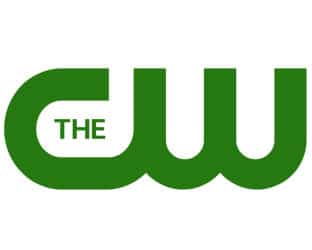Leaders from the broadcasting industry, government, electronics manufacturers and advocacy groups made a final pitch for preparedness as all remaining analog TV stations are set to make the switch to DTV today. Consumers are being reminded to scan once again on Saturday for stations that have moved. And, yes, there are still households that have not prepared for the change-over.
Whether you prefer the Nielsen estimate of 2.8 million households or the 1.75 million estimate by a SmithGeiger poll for NAB, there are still quite a few Americans who are not yet ready for analog TV to end today and who, unless they happen to be within the signal of an LPTV that hasn’t switched to digital, will have nothing to watch tomorrow except a “nightlight” station telling them how to do what they hadn’t bothered to do to deal with the transition.
In truth, the two estimates aren’t that different. Nielsen’s estimate was as of May 24 and the poll for NAB June 3. Also, NAB found that 12% of households, some 2.2 million homes dependent on antennas for TV, did not actually have the ability to watch DTV yet, but 3% either had converter box coupons or had applied for them, so only 9%, 1.75 million households, had done nothing to prepare for the transition just nine days before it was to take place.
Bill Lake, DTV transition coordinator for the FCC, is expecting some busy days ahead. He told the press conference in Washington, DC that over 200 FCC staffers are in the field to deal with the transition and there are 4,000 agents to answer phone calls, with phone banks being staffed 24 hours a day. The number, repeated by participants throughout the press conference: 1-888-Call-FCC (1-888-225-5322). Also, there are over 500 walk-in centers to provide assistance and “we do house calls,” Lake noted.
Anna Gomez, Deputy Assistant Secretary for the US Department of Commerce, said NTIA is still issuing coupons for converter boxes and that funding was allocated to get them out by First Class mail. She noted that the coupons are still valid through July 31st.
“We’re ready,” said newly installed NAB Television Board Chair Paul Karpowicz, President of Meredith Broadcasting Group. He credited an extensive public service campaign by broadcasters for getting the nation to the point where 98% of US households are aware of the DTV switch. He acknowledged that some viewers will wait until the last minute. But he noted that it is not too late to make the switch if a Household is not ready today. They can still get the necessary equipment and start watching digital television. “Digital TV is free, it’s better and it’s arrived,” he declared. And, with all of the reporters assembled, Karpowicz didn’t pass up the opportunity to make a plug for mobile DTV as well – the next big thing for broadcasters.
Kyle McSlarrow, President and CEO of the National Cable & Telecommunications Association (NCTA), noted that preparing the nation for the DTV transition had given a common purpose to groups normally battling each other in DC. Over a year ago he got together with then-NAB President David Rehr and Consumer Electronics Association President Gary Shapiro. Despite their differences on many issues, they quickly recognized that utilizing the power of television was going to be the key to preparing Americans for the change-over taking place today.
Now that the transition has come, the focus is shifting to making sure that households using antennas are actually able to make optimum use of their new DTV equipment. Consumers are being urged to rescan on Saturday, since some transmitter locations and channel locations are changing as stations finally shut down their analog signals and go strictly digital at some point today. Also, Christopher McLean, Executive Director of the Consumer Electronics Retailers Coalition, noted that the antenna is important and some people will need to reposition their antenna to get the best reception of over-the-air DTV.
One reporter quizzed Lake about people losing television viewing because of the transition. The FCC official noted that most people will receive more channels than before the transition and most stations will cover more people with their DTV signal. But he conceded that some Americans will have reception difficulties. Lake said the problems should be able to be resolved for most people in urban areas with the right equipment. But, for a few households, primarily in very rural areas, it may be years before they return to the pre-transition number of receivable channels.
Asked about particular problem areas for people not being prepared, Lake said it’s pretty much the same 49 markets identified months ago as having the highest percentages of households not prepared for the transition. Many of those are in Southwestern states.
RBR/TVBR observation: The next week or so should see a lot of activity as the procrastinators realize that they really do not have any television to watch and try to find out what to do. Also, many people who are prepared are going to need help in rescanning and adjusting antennas. The government-private sector coalition has done a lot of preparation and plenty of help is available, but there are still going to be some very upset consumers.




